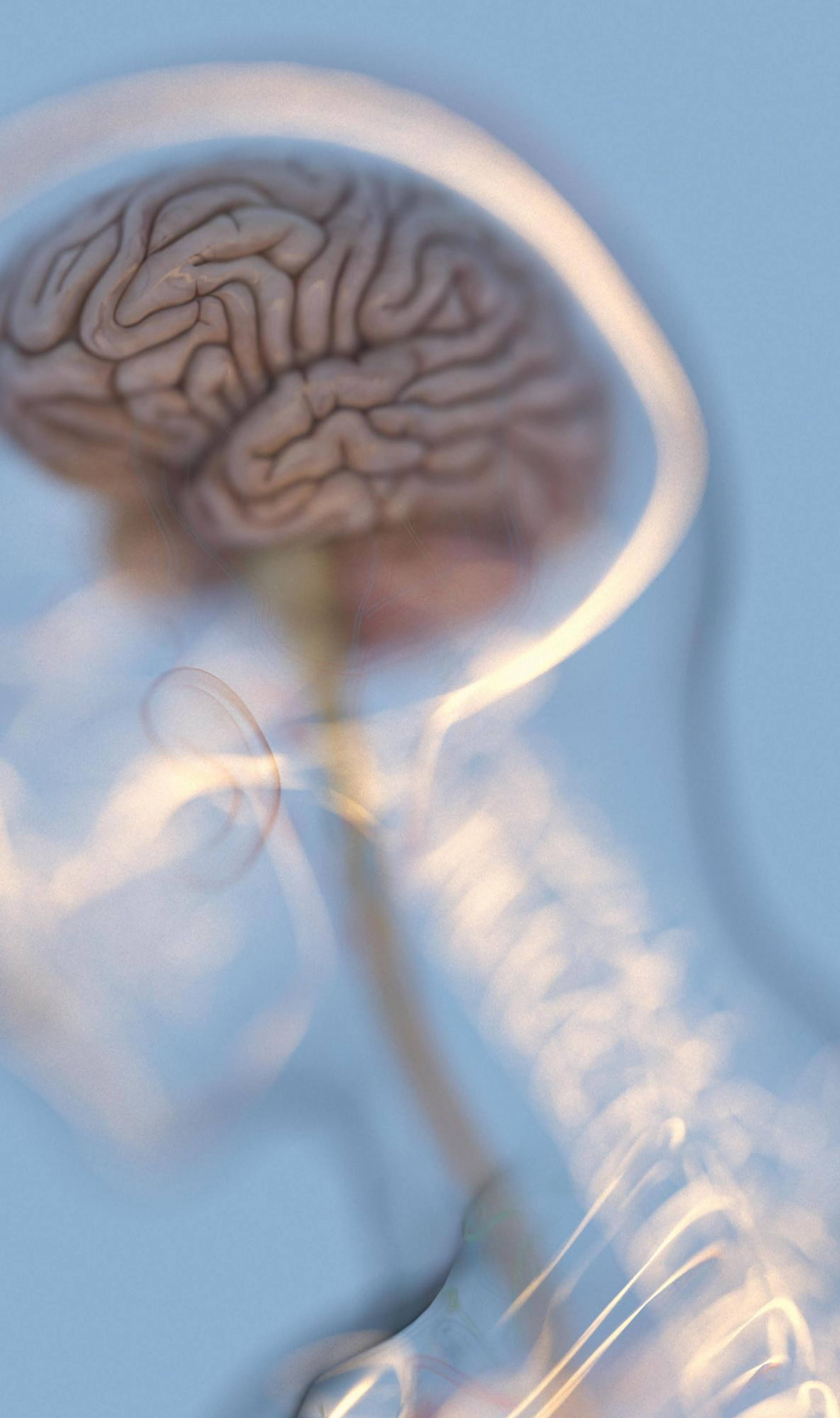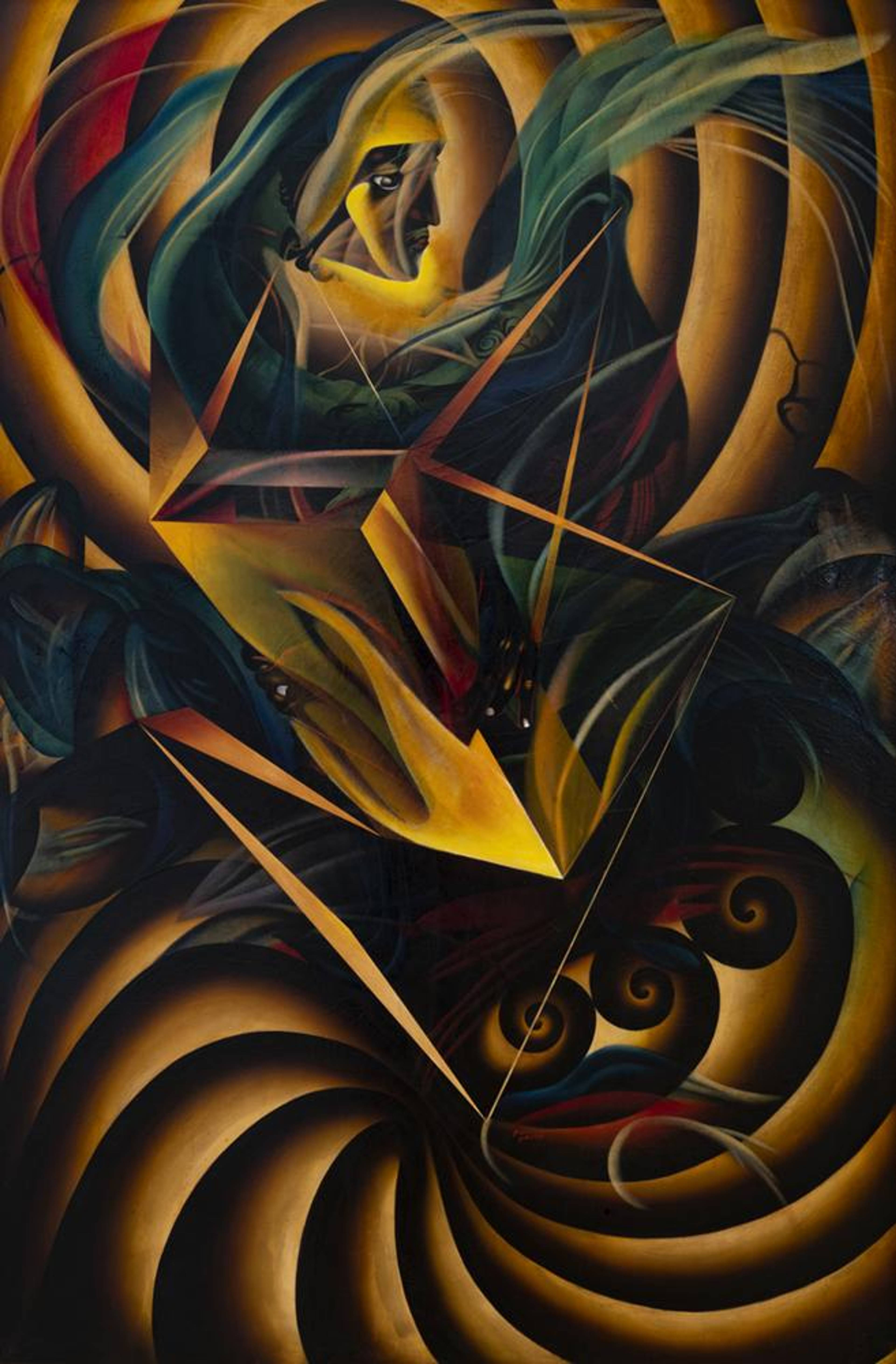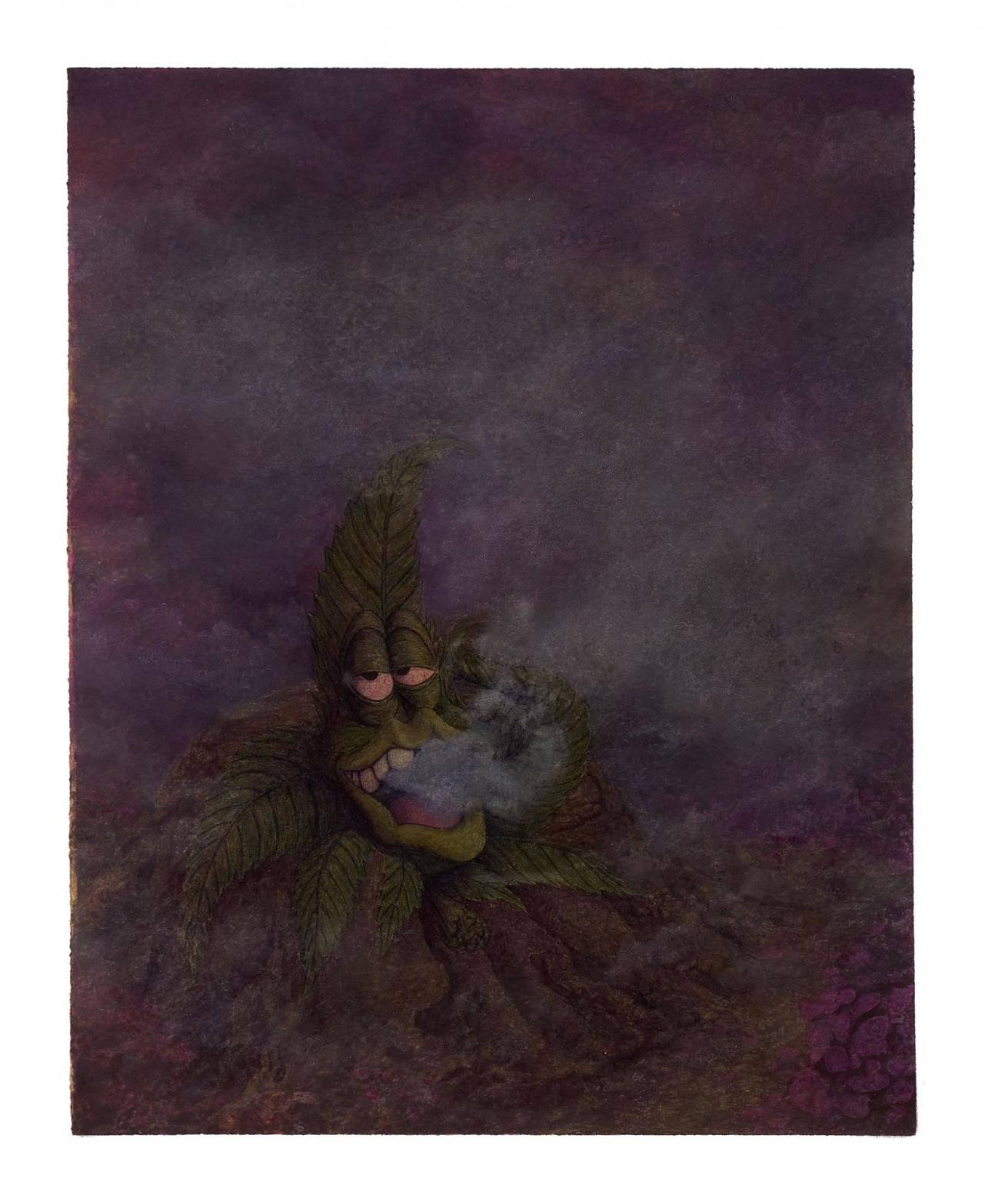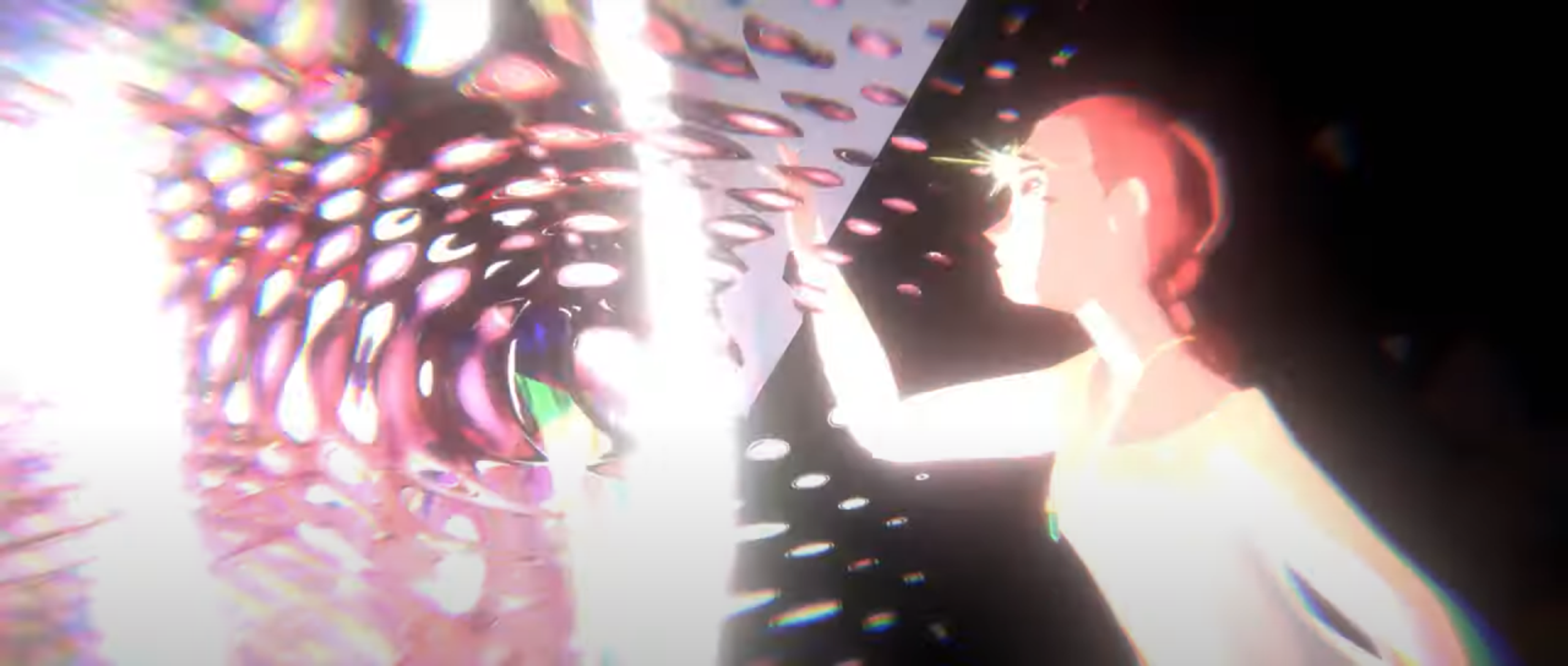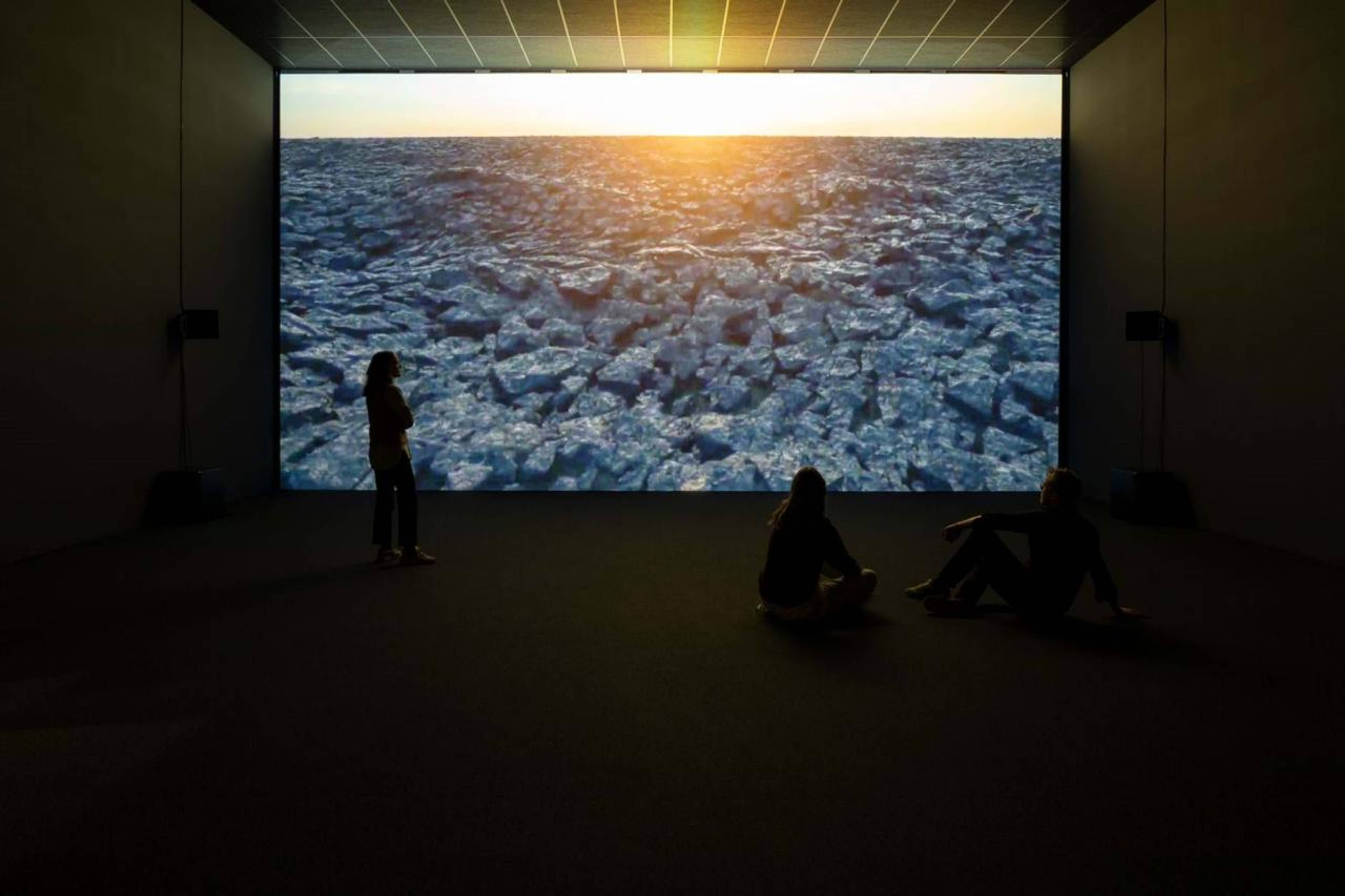Around the New Museum Triennial, I wandered and despaired. On my second visit to the show, returning to the top floor again, I began to despair, not because it was terrible, but because it made me feel that there were no new ideas in art.
The show is curated by Margot Norton and Jamillah James with Jeanette Bisschops and Bernardo Mosqueira and titled “Soft Water Hard Stone” (open until January 23, 2022) after an old Brazilian proverb: “ Água mole em pedra dura, tanto bate até que fura”. Soft water on hard stone hits until it bores a hole. The proverb is appropriate, as the show is boring. And soft, and empty like a hole. It has a lot of sculpture made of traditional, authentic materials, in weathered old tasteful forms. It signals a return to art for art’s sake, but a very craft-based approach to art for art’s sake. Some works are even made of hard stone. Some drip soft water. And while I was taken by Gabriel Chaile’s giant clay fertility idol inlaid with real eggs, Rose Salane’s psychic investigation into old rings found in the soil, Samara Scott’s painterly sunlit melted-things-and-trash mural in the windows onto the Bowery, most of the show just drifted softly by me. There’s not much that’s exciting. There’s nothing compellingly awful. There’s nothing subversive or provocative, and nothing overtly political. It’s a slow river of emotionally flat, delicately mindful art. It’s hypnagogic and ambient; which does reflect the present mood.
I have been writing this column for five years now. The five strangest years of my life. Things just got weirder and weirder, more psychedelic, hysterical, squawking with moral panics and manias, and then a year ago, with another election, it all slowed right down. America tuned out. Life went from feeling overwhelmingly fraught to soporific and detached. Now every day is like a dream, a warm glass of milk. Things are still weird as hell but they wash right over us, and we take all the outlandishness and lies and surreality in our stride. Nothing seems to happen, not compared to how it was, and time goes by very slowly. And life was more interesting, when everyone was losing their minds.
The future is an old Brazilian proverb. It’s a really fantastic blowjob in a porn cinema in Times Square in the 1960s, before it was all taken over by M&M’s World and glazed Krispy Kremes and NFT advertising.
For “Soft Water Hard Stone” Kate Cooper has made a computer animation, Somatic Aliasing (2021), that bounces in and out of a transparent, lightly glowing body to a tingling beat. It’s a futuristic portrait in which you can catch glimpses of a person’s spirit, or some kind of inner light. It has the only new aesthetic in the show, and is the only piece that had to have been made this year (or at least in the past few years). The video was made with CGI. And CGI, the wall text explains, is “a technology typically used in commercial production and often associated with representations of enhanced productivity and idealized bodies”. This is a ridiculous description. Here at the New Museum, the heart of the new, and the home of the digital art platform Rhizome, is this the best description of CGI and its infinite possibilities that can be offered? Is making new images a form of alienation? Are computers powered by demonic energy?
My gripe with this year’s Triennial is that it all looks so old. So many of the artworks could have been made 10, 20, 40, 80, 160, even 2,560 years ago. That’s jarring for a survey of emerging artists from around the world. Compare this edition to the 2018 edition – in which you’ll find Wong Ping’s hilariously dark computer animations, Janiva Ellis’s psychedelic comic paintings, Anupam Roy’s bloody gothic scenes of headless men and monsters, Hardeep Pandhal’s dirty postcolonial frescoes on the wall – or the post-internet triennial of 2015, curated by Lauren Cornell and Ryan Trecartin, and it’s extraordinary how much more traditional and conservative the work has grown with each new edition. We’re falling backwards in time.
Paulina Peavy, Untitled, c. 1940–50s. Courtesy: Andrew Edlin Gallery, New York
21% of the artists in “Greater New York 2021”, MoMA PS1’s quinquennial “survey of artists living and working in the New York City area”, are dead. But why are so many of the artists dead? It’s not explained anywhere.
At Thanksgiving dinner, I was asked, regarding this show, “Why is everything made of trash?” That’s also unclear, but perhaps has to do with authenticity and the New York spirit (trash everywhere). The curatorial team of Ruba Katrib and Serubiri Moses with Kate Fowle and Inés Katzenstein took their inspiration from Samuel R. Delany’s book Times Square Red, Times Square Blue (1999), which is full of autofictions of cruising Times Square’s pornographic movie houses, peep shows and bars, fucking guys from the 1960s to the 1990s; sure they did. The exhibition does have a strong ’70s and ’80s aesthetic, evoking the old Times Square, the East Village, the Chelsea Hotel, and the cruising piers through the inclusion of many older artists who were there, and many old works, and old documentary photographs of the city last century, and offers an alternative and somewhat preposterous history of the past 60 or so years of art in New York City.
Well, it’s a great show really (open until April 18, 2022), a freaky show, with some way out-there artists and a weird sense of humour. In the works at least, less so the accompanying texts: a Bill Hayden drawing called WEED , showing a bleary-eyed anthropomorphic weed plant smoking weed, we’re told, is “a nod to the notion of consumption as self-depletion, and even a form of cannibalism”. There are good pieces from Yuji Agematsu, Julio Galán, Emilie Louise Gossiaux, Milford Graves, Bettina Grossman, E’wao Kagoshima, Marie Karlberg, Sean-Kierre Lyons, Rosemary Mayer, Kayode Ojo, Paulina Peavy (amazing) and plenty others. But while the curation makes the past seem rich and full of surprises, by taking that past as the overarching theme, it also makes today’s New Yorkers appear trapped in a timeless flat circle, a long 1970s from which we cannot escape.
Bill Hayden, WEED, 2021. Courtesy: MoMA PS1, New York. Photo: Steven Paneccasio
Here there’s no digital work included, other than that shot on digital cameras. Again, a lot of the works could have been made decades ago, and many of them were. Dead materials are fetishized, and so is death itself. There’s a deep yearning for the past in these rooms, and few flashes of the present or the world we live in now. Although, a sly architectural intervention by Diane Severin Nguyen, who cuts thin vertical incisions through one of the walls, through which the lights and traffic of Queens can be glimpsed in rays and bright peep-show slivers, makes the city outside appear magical, and colourful, abstract and sparkling new, like her photographs hung on the opposite wall.
Both of these massive New York survey exhibitions, which happened to coincide this year after “Greater New York” was delayed, choose to situate contemporary art firmly in the past, in the retro and nostalgic. The future is an old Brazilian proverb. It’s a really fantastic blowjob in a porn cinema in Times Square in the 1960s, before it was all taken over by M&M’s World and glazed Krispy Kremes and NFT advertising. It’s an artist you’ve never heard of who died in the ’80s. Both shows reject the digital, and the possibility of radically new aesthetics or ideas, and place emphasis instead on the use of authentic materials, or the rediscovery of the overlooked and underrepresented. What makes art contemporary now appears to be the moment in which curators discover it. Emerging artists grow older and older. Emerging art can be made by the dead. There’s an idea that wanting to return to tradition is a reactionary, conservative impulse – and very often it is – but so much art now seeks to return to tradition, to old inspirations, styles and ways of making. It’s just a question of which tradition is chosen, and how far back you go.
These have been five crazy years, at times so intense, so full of paranoia and mania, and it’s surprising that we’ve ended up with an art that’s so traditional and nostalgic. During these years, people have been afraid of so many things: The Trump presidency. Racism. The rise of fascism. That Facebook has been manipulating our minds. That the Russians are hacking our consciousnesses. That free will no longer exists. North Korean nuclear tests. Islamic terrorism. Domestic terrorism, shaman-involved insurrection. Pepe the sad cartoon frog. Irony. Ambiguity. EVIL artists and writers. Greta sailed across the ocean to Manhattan to warn us about climate change. We’ve been scared of the global pandemic. Of cities, of going outside. Of spending time with one another, of social proximity. We’re frightened of each other. And so much else besides. What these surveys of the present seem most afraid of though, is the present, and the future, which is considered completely doomed; and that’s a shame, given that the modern art biennial began, in part, as a celebration of the present and a promise of a better future. At PS1 and the New Museum, there are few bright new visions to hold onto, only so many retreats and returns to tradition. But I did have some moving encounters elsewhere, here at the end of time.
Still from Life After BOB: The Chalice Study, 2021, 50:15. Courtesy: the artist
At The Shed, Ian Cheng’s new film Life After BOB (open until December 19) plays in a purpose-built cinema. It’s an existential CGI anime about a father and daughter, and bursts with blooming flowers, fireworks, tumbling lights and warping metaphysical landscapes that wouldn’t be possible in traditional film. It’s incredibly beautiful in passages, as much as any animation I’ve seen. Next door, The Vessel, now covered in Christmas lights (there are more than 2 million lights at Hudson Yards this Christmas), looks pretty nice also, and could belong to the same overilluminated sci-fi world.
Up in Harlem, in the cavernous upstairs of the old Gavin Brown space that had to close down last year, on a massive cinema screen that fills the wall, with huge looming speakers mounted on a rig above it, like at a concert, plays Arthur Jafa’s new film AGHDRA (open until December 19). In place of a pop star, there’s a giant black sea of CGI stone all the way to the horizon, which sings classic soul and R&B hits under the always-setting digital sun. Songs are slowed down, pulled apart, and made new. There’s a great version of “Hello It’s Me” by the Isley Brothers, or possibly Todd Rundgren.
Arthur Jafa, AGHDRA, 2021. Courtesy: the artist and Gladstone Gallery, Brussel
On opening night, which was also a sort of wake for the gallery, the room was packed. Everyone sat down or lay down on the floor below the screen, and stared up at the world sinking below the horizon. When the sea first rolled into song, as the waves and harmonies swelled, and lifted us away, I made some notes, “Why can’t art move us?
Why can’t it make us feel more alive!”
(I was still pissed off then by my first visit to the Triennial.)
But why can’t more art have the sort of effect this film does? Why does so little even try? AGHDRA is a film full of beauty and emotion. Mournful but still full of hope, still uplifting.
Downstairs there were good wines from Gavin. Shrimp curry cooked by Rirkrit Tiravanija and friends in the kitchen. DJs and a busy dancefloor. A good feeling of coming together. My friend said the film upstairs was a Rothko. A giant animated Rothko, a portal, in front of which the audience sat and waited to lose themselves. It reaches back into the past, and up through the present, into the new year.


